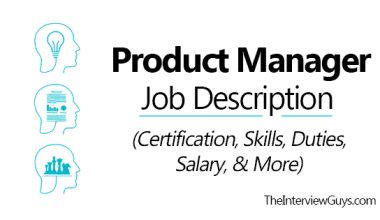The first and most important key to your company’s success is the onboarding process for new employees. The priority for any company should be the employee onboarding process. When the search for a new employee is complete and the company provides the signed offer letter, the company’s hard work is to keep them engaged. We’ll take you on a tour of the new hire onboarding plan and its best practices software in this blog. There are some tricks you should now look into. This will result in an excellent new hire onboarding process, allowing a company to lay the groundwork for a long-term relationship with new hires.
Employee onboarding has a significant impact because it establishes a long-term partnership between the company and the employee. We can say that boarding is your company’s first and last chance to demonstrate why someone would want to work with them.
New Hire Onboarding Process
The process of introducing new employees to the environment and culture of the organization is known as new hire onboarding. However, the time required to accomplish this may differ from one organization to the next.
Some organizations consider onboarding to be a one-day event, while others consider it to be an 18-month process. Almost all organizations, however, begin the new hire onboarding process immediately after the offer letter is sent to the prospective employee. Here’s a detailed breakdown of the new hire onboarding process.
Benefits of Using an Onboarding Process Plan
It can be difficult to integrate new employees into an existing company structure. As a result, we recommend developing an onboarding process with clear roles for HR, mentor, manager, and new hire.
When your new hire onboarding process plan is documented ahead of time, your organization will be able to increase their ability to contribute in their role quickly, increase their comfort level, and reinforce their decision to join your organization, leading to higher retention and better long-term performance for both the employee and the company.
Using a flowchart or a timeline to visualize your new hire onboarding process will provide new employees with an easy-to-understand picture of their first year at your company, improve their ramp time, boost their performance, and lay out their feedback and review process.
There are two common methods for developing a new hire onboarding process flow: by its five major stages and by its timeline. Continue reading to learn more about both and determine which is best for you and your organization.
Use the 5-Stage Process Flow for New Hire Onboarding
The first major approach stage is the onboarding process. Human resources and training staff are typically heavily involved in the early stages, with job function mentors and direct managers becoming more involved in the later stages.
#1. Preparation
In general, the preparation stage of onboarding lasts from pre-arrival to the first month or so of the new hire’s employment. Pre-arrival paperwork, a formal introduction to the company’s policies and procedures, and an informal introduction to company culture through the employee’s environment are all part of this phase of the employee onboarding process.
#2. Orientation
Typically, the orientation stage of the onboarding process occurs on the employee’s first day or week of work. This phase encompasses the majority of the human resources new hire onboarding process:
- Completing tax forms
- Outlining the company’s values and culture
- Learning about and enrolling in company benefits
- Showing the employee around their workstation
- Examining company policies on safety, health, and other issues
- Educating employees on specific software or procedural requirements related to their job function.
#3. Integration
The integration phase of the new hire onboarding process has no set time frame, but it typically lasts for the first six to twelve months of the employee’s journey with your company. During this phase, the employee gradually expands their work through mentorship from other employees with similar job functions.
#4. Engagement
The engagement phase lasts for the first year or so of the employee’s employment. This stage is all about the employee’s relationships with their team, their manager and/or direct reports, and members of cross-functional teams. For example, our People Ops team at Lucid organizes “new hire lunches” so that new employees can meet people from different teams. True engagement makes the new employee feel at ease with the company culture.
#5. Follow-up
You should evaluate the employee’s performance and integration into the team during the follow-up stage of the onboarding process for new employees. Some companies do this after 90 days, others after six months, still others after a year, and still others after all three. If Human Resources or the new hire’s manager meets with the employee to discuss whether or not the employee is meeting specific performance metrics and to assess how the employee “fits.” This employee onboarding phase also allows your company to assess the effectiveness of the onboarding program itself.
New Hire Onboarding Plan
In increasing order of priority, a new hire onboarding plan lays out the various steps involved in the employee onboarding program. The HR team can use the onboarding plan to ensure that all necessary information is passed on to the new hire and that they feel at ease in their new workplace.
The employee onboarding plan is not limited to the first day of work for the new hire. It is a lengthy process that can last anywhere from 6 months to a year to ensure they have everything they need to succeed in their new position. Meeting the team, learning new tools and courses, regular check-ins with the manager, goal-setting, and so on. Here are some things to consider when developing an onboarding plan for a new hire.
#1. Before the first day, pre-boarding:
The candidate who will be joining your company has accepted your offer. All of your new hires’ onboarding paperwork has been completed thoroughly and smoothly. And isn’t that wonderful news? You must now ensure that they enjoy their first day at work. You must prepare pre-boarding stages, such as
- Send an email or a video greeting
- Invite new candidates to the social gathering.
- Inform the team of the new employee’s role and responsibilities.
- Configure an email address and system access
#2. Orientation – first day:
The first day on the job is the same for every new candidate. In general, the department leader gives the new employee a lot of information, but they will only remember the first day for the rest of their career. The following is a template for the first day following new hire onboarding.
- Bring some treats for the candidate.
- Go over the day’s plan.
- Meet the team members in person
- Describe the company’s structure.
- Display a company presentation
#3. First week:
The first week is crucial for any new employee. The company must complete several tasks. Let’s look at the first week’s template.
- Add the candidate’s name to the company’s page.
- LinkedIn introduction
- Individual conversations with coworkers
- Plan long-term meetings
#4. 360/3 = 90 days:
Overall, the most important days for any candidate during the new hire onboarding process are those 90 days. We concentrated on many factors when designing an onboarding experience. But most importantly, having a sense of responsibility at work is essential.
#5. 365-day completion:
Some managers and leaders believe that wrapping up the onboarding process is a bad idea. However, we recommend it. Having a final onboarding sit down with your employee and learning about their first annual performance review allows you to cover topics such as
- How do new employees fare?
- What do they see for their future after a year of working for the company?
- Most importantly, inquire about their onboarding experience and what they anticipated during the onboarding process.
New Hire Onboarding Software
Consider employee onboarding software and resources to be your most valuable allies in the quest to provide the best new hire experience possible. This new hire onboarding software relieves you and your team of some of the logistical burdens.
#1. Caroo
Caroo improves your onboarding process with its new-hire care software, which allows you to provide new hires with curated welcome kits and work-from-home care packages. They use a combination of premium swag, useful office supplies, and healthy snacks to provide employees with an exceptional experience from day one.
#2. Bambee
Bambee can connect you with skilled human resource professionals who can assist you in developing and refining your onboarding process while also ensuring you understand and comply with employment regulations.
#3. Sapling
Sapling is all about its users. Also, Sapling, as a People Operations Platform, enables you to automate your people workflows, allowing you to focus on creating a positive employee experience rather than worrying about how to store critical employee data.
#4. Remote
Remote is a global platform for teams that work remotely. Access the talent you need with an HR platform that makes it simple to onboard, pay, and engage remote employees and contractors.
#5. ClearCompany
ClearCompany is a talent management software that improves the entire employee lifecycle, from initial recruiting to new hire onboarding performance. Their mission is to create an engaging onboarding experience in which both you and your new employee are completely satisfied with the process.
Read Also: ONBOARDING SOFTWARE: Top Best Onboarding Software 2023
New Hire Onboarding Best Practices
While organizations recognize the importance of onboarding, that does not mean they are doing it correctly. Because of the poor onboarding experience, a few employees will leave the organization.
Here are some best practices for new hire onboarding. You can put it into action in your company or organization.
#1. It is necessary to combine human resource practices:
The 90-day plan is a pillar in job descriptions and job postings all over the world. That plan should include an explanation for why the job was created. If you do not include the reason, the candidate will apply but be disappointed when they arrive at work and learn about the actual job. That indicates that the candidate is dissatisfied with the system. That is why it is critical to integrate HR practices.
#2. Checklists are essential:
We have provided you with several checklist templates that you can use in your business. Checklists are essential for any manager. Every day, they should prepare a checklist of their work and keep it on the table.
#3. Keep an up-to-date onboarding checklist:
You should keep the onboarding checklist consistent. For example, if the manager has a checklist but does not follow it every day, the practices of new hire onboarding will be destroyed. Implement it and make sure you use it regularly.
#4. Work must be efficient:
The article’s ideas should be put into action. Without a doubt, each company has its onboarding process. However, whatever you do, make sure it is consistent, and that the work you do is effective and impressive.
#5. Hold one-on-one meetings regularly.
The primary goal of the one-on-one meeting is to foster positive and beneficial connections between the new employee and their colleagues. It is critical to take careful notes on the employee’s work and to make this a habit.
What are the 4 phases of onboarding?
- Pre-onboarding.
- Welcoming new hires.
- Role-specific training.
- Easing the transition to their new role.
What are the 5 C’s of onboarding?
Compliance, Clarification, Confidence, Connection, and Culture have since evolved into the five “C’s” of onboarding.
What are the steps to onboarding a new employee?
7 Steps to a Better Employee Onboarding Process:
- Prepare coworkers for the new hire.
- Prepare the new employee’s workstation.
- Ensure that your new employee has access to any programs that are required.
- Introduce yourself.
- Plan a team lunch.
- Give yourself plenty of time for training.
- Remember to follow up.
What should be included in an onboarding?
In addition to the new hire onboarding paperwork, your onboarding checklist should include information about new employee orientation, an introduction to company culture, mission, and values, and a review of the employees’ roles and responsibilities.
What does successful onboarding look like?
A successful onboarding program will most likely include orientation, job-specific training, introductions, culture acclimation, and follow-ups, depending on the size and needs of your company. And it all begins the moment a new hire accepts the position.
Who is responsible for onboarding new employees?
The hiring manager is primarily responsible for the onboarding process. From start to finish, the hiring manager must be proactive and engaged in facilitating the employee’s successful integration into the organization.
Does onboarding include a background check?
In most cases, this includes a criminal background check as well as education and employment verification. Some employers demand additional background checks, such as a credit check and a motor vehicle report.
Conclusion
The article concludes with the new hire onboarding process plan and best practices. You may have realized that proper new hire onboarding process software is required regardless of the size of your company. This process takes longer when done manually. The best option is to keep up with technology and use the system for onboarding. I hope you find this new hire onboarding guide useful in your employee onboarding process.
New Hire Onboarding FAQs
What are the three 3 phases of employee onboarding?
When people teams discuss onboarding, they generally refer to everything that occurs after new hire signs an offer letter to get them started in their role. All of those different things typically fall into three overlapping phases: administration, orientation, and enablement.
What are the top three keys to a successful onboarding program?
People, culture, and milestones and tasks are the three pillars of a successful strategic onboarding program. A consistent and repeatable onboarding process necessitates few changes and benefits all stakeholders. You’re also better prepared to set up your new hire for long-term success.
How long is typical onboarding?
Ask any HR professional for the industry standard, and they will tell you that onboarding should last 90 or 100 days. Despite this, nearly three-quarters of hiring managers and HR professionals say their onboarding process lasts one month or less, according to a recent CareerBuilder survey of over 2,300 hiring managers and HR professionals.
Related Articles
- EMPLOYEE ONBOARDING: What You Should Know About The Entire Onboarding Process
- 15 Best Customer Retention Strategies That Increases Profits (guide)
- HUMAN CAPITAL MANAGEMENT (HCM): Types, Examples & Software Solutions
- The Top Best 2022 HCM SOFTWARE Tools, Companies & Vendors
- DRIP CAMPAIGN: A Guide to Drip Campaign Marketing






